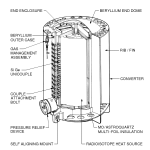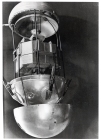Robert D. Collier is Emeritus Physics Professor at Western Nevada College and Director of the Jack C. Davis Observatory in Carson City, NV. Professor Collier’s love of science began at an early age.
1950’s – EARY INFLUENCES
When he was 8 years old, Robert saw Sputnik from a hill near his home. His curiosity showed early. He wanted to know how the Sputnik satellite was able to get launched into space, and what made it stay there.
“The Soviet Union launched Sputnik 1 on Oct. 4, 1957. The world’s first artificial satellite, Sputnik 1 was a 183-pound beach ball-sized sphere that took about 98 minutes to orbit Earth. The launch of Sputnik marked the start of the space age and the U.S. – U.S.S.R. space race. ” nasa.history.gov
1960’s – EDUCATION AND EARLY CAREER
Collier’s curiosity led him on an educational journey in mathematics, physics and astronomy. After college, Collier went to work with the Atomic Energy Commission. He conducted nuclear energy research at the top secret Mound Laboratory in Miamisburg, Ohio, during the Cold War era. His research was later applied to the problem of how to power space travel.
1970’s – RESEARCH MAKES IT TO SPACE
The power sources for deep space travel are called SNAP-19 Radioisotopic Thermoelectric Generators. SNAP stands for Systems Nuclear Auxiliary Power. These devices are also referred to as RTG’s. Descendants of those generators were used to power and heat spacecraft such as the Voyager I & II, Cassini, and most recently the Curiosity Mars Lab mission. Of course, the Voyager I spacecraft is the first man made object to ever leave our solar system on a journey through interstellar space.
1970’s – A CAREER CHANGE

When funding for nuclear energy research started to dry up in the 1970’s, Collier unexpectedly began a teaching career that would span four decades, with nearly three of those spent at Western Nevada College, in Carson City, NV. As a teacher, mentor and guide he has helped many of his own students begin exciting and satisfying careers in scientific fields. His involvement in historic scientific research helped humanity reach interstellar space, and he continues to inspire students and the astronomy community in his role at WNC and the Jack C. Davis Observatory in Carson City, Nevada.
Schematic of the RTG

